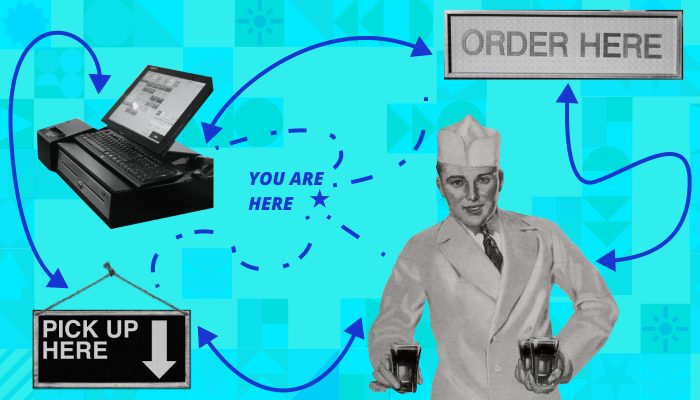Enhancing User Experience through Service Design | DOOR3
03.23.2023If you type “service design” into your favorite search engine, you may find a variety of vague or general explanations that only halfway answer your question. Often, words like arranging, planning, and organizing are riddled throughout search results, and full definitions like “the activity of planning and arranging people, infrastructure, communication and material components of a service in order to improve its quality” to quote Wikipedia, don’t exactly do the best job either. So, this begs the question: what exactly is service design?
What is Service Design?
Service design is a multidisciplinary practice that uses an iterative approach to create value for a provider and its users.
With a definition so general, it can be challenging to understand the differences between both service design and user experience design, as they are two closely related principles. However, if we simplify their relationship, we can understand their unique perspectives.
Service design requires a more holistic lens, considering the entire ecosystem over individual touchpoints. Service design seeks to streamline the end-to-end user journey and makes sure the organization can support it.
To understand this in action, the team at DOOR3 put together a short video to cover the basics of service design, how it might manifest within a commonplace business, and how you can learn more about service design in a professional environment.
Why is Service Design Important?
Carefully considered UX design can solve a lot of problems, but it can’t solve all of them. Without service design, all the touchpoints created for the user experience become islands of interaction without a narrative guiding the user through the experience. We can see the effects of this siloing through the thought experiment of a coffee shop.

Imagine in your local coffee shop that all the elements of the user experience of purchasing coffee are included. A straightforward menu, a pickup point for your order, a chipper barista ready at the register. Except there’s one element missing, none of these user touchpoints are laid out in store in an obvious direction. Maybe the ordering point is in the back of the store, the menu is facing away from the front door, the pickup point is in the middle of the seating options.
This may sound silly at first to consider, but this is a perfect example of why service design is a critical part of the overall functionality of a designed experience, just because all the necessary elements exist in the same space does not mean that the end-to-end service is well designed.
If user experience design is focused on what the end user is experiencing, then service design is focused on how the organization will deliver that user experience.
For user experience, this may involve more individual touchpoints for the user, with the goal of optimizing interactions between users and the interface.
Ethics within Service Design
Service design allows for organizations to analyze and optimize the business processes that guarantee service delivery. This analysis provides the opportunity to identify bottlenecks or inefficiencies in the end-to-end experience.
It is not uncommon however, that during these periods of analysis an organization may uncover cost cutting methods hidden within the user journey. Ethical service design states that organizations should always put the best interests of its users before a company’s profits, and excellent service design should be designed for optimal performance for both parties. When service design becomes a cost cutting tool at the price of the user, the practice is no longer being used for its intended purpose.
Service design also factors into accessibility needs, as both physical and digital accessibility touch points have to be considered in the context of the experience.
For example, imagine if our coffee shop had a ramp for its wheelchair users, but placed its pickup counter at a height which only standing individuals could reach. It’s these small considerations over the entire experience of the user that make huge differences in whether or not your product is even accessible to a specific demographic of users with accessibility needs.

Together not opposed
Both service and UX design are approaches made to complement each other. With both practices holding different levels of scope and focus, it’s important for designers to consider the needs of its users both holistically and through individual touchpoints.
DOOR3 has been utilizing both approaches for decades, and can help guide your organization through the UX design and development of your next product of service. Reach out to us here.



